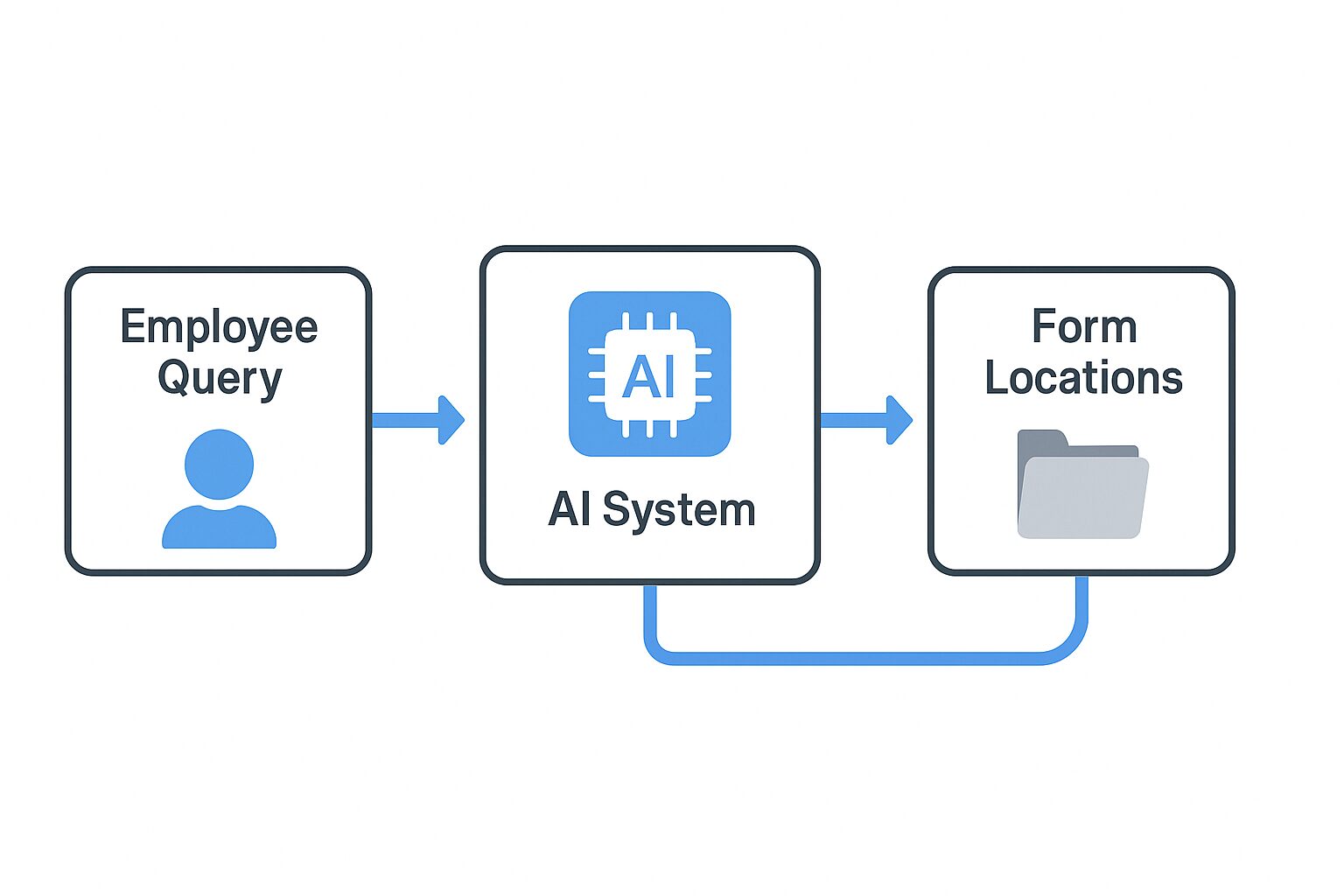Everyone is talking about AI agents and intelligent automation, but few teams stop to think about how to make it work in an everyday setting. AI is not a magic fix. To see real gains, you need to feed it clean data, capture your team’s know-how with knowledge management AI solutions and train people to work with both.
Streamline Your Data for Agentic AI Workflow Automation
AI agents only work as well as the data you give them. If your files are scattered or out of date, you will get useless results.
- Break down department workflows: Make sure sales, HR, and IT systems all feed into the same data hub, so everyone is aware of their protocols and flows within their departments.
- Clean, govern, and enforce data governance for AI: Set simple rules for data quality and stick to them.
- Focus on what matters: Audit your forms, policies, and workflows. Decide which documents carry real weight and tag them so agents can find them.
A single source of truth isn’t optional. It’s the backbone of any AI-powered process and the foundation for AI-driven processes.
Lock Down Institutional Knowledge and Make It Searchable
When someone leaves, they take hidden know-how with them. Build an organizational knowledge base so AI can access it. You can capture that in an AI agent if you build it right.
- Collect lessons learned: After each project or major meeting, jot down key takeaways so agents can reference them later.
- Add context: Label who owns each policy, when it was updated, and why it matters.
- On-Demand: Offer on-demand answers for new hires or just in general and support AI onboarding training for new hires. Allow people to ask AI where to find forms, who to contact about approvals, or how to handle common scenarios.
Turning institutional knowledge into searchable data cuts stress, speeds up onboarding, and keeps everyone on the same page.
Train Your Team to Work with AI
AI isn’t a replacement for people. It’s a tool that needs smart users to guide it.
- Run hands-on sessions: Show staff how to phrase prompts, check the AI’s output and fix errors and cover prompt engineering best practices.
- Create simple playbooks: One-page guides like “How to request a form” or “Where to find policy updates” give people confidence.
- Build feedback loops: Track common questions and mistakes, then tweak both your AI agents and your own processes.
When people know how to hand off grunt tasks like data pulls or basic research to AI, they can focus on judgment calls and building relationships which results in more being done and room for creativity.
Bottom Line
AI agents can handle heavy lifting when you set them up right for human collaboration. Give them clean data, bake in your team’s institutional knowledge and teach everyone how to work together with enterprise AI agents. Do that and you will see major improvement in your organization.
